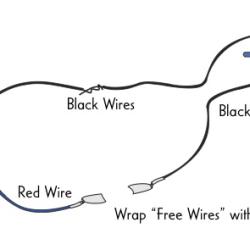Source Institutions
Source Institutions
Add to list Go to activity
Activity link broken? See if it's at the internet archive

In this activity, learners create an electrical circuit and investigate how some dissolved substances conduct electricity. Use this activity to explain how the nervous system sends messages as electrical signals along the length of living nerve cells and the role of nutrition in brain functioning. This lesson guide includes background information, extensions, and a handout.
- 10 to 30 minutes
- 45 to 60 minutes
- $10 - $20 per group of students
- Ages 11 - 14
- Activity, Experiment/Lab Activity, Lesson/Lesson Plan, Simulation
- English
Quick Guide
Materials List (per group of students)
- 60 mL of sports drink
- black marker
- clear plastic cup, 9 oz.
- graduated cylinder (mL)
- measuring spoon, 1/2 tsp
- wire stripper
- 180 mL distilled water
- 4 clear plastic cups, 9 oz.
- 2 clear plastic cups, 2 oz.
- 2 15-cm pieces of #22 gauge insulated wire
- 2 strips of aluminum foil, 5 cm x 1 cm each
- 1/2 teaspoon of salt
- 1/2 teaspoon of sugar
- battery, 9 volt
- battery snap connector, 9 volt
- 2 coffee stirrers
- mini light bulb
- mini light bulb socket
- copy of Sending the Signals student sheet
Subjects
-
Engineering and Technology
-
Engineering
- Electrical Engineering
-
Engineering
-
Life Sciences
-
Cells
- Cell Structure and Function
-
Human Body
- The Brain and Nervous System
- Health and Nutrition
-
Cells
-
Physical Sciences
-
Electricity and Magnetism
- Electric Charges and Currents
- Electric Circuits
-
Energy
- Energy and Power
-
Chemistry
- Solutions
-
Electricity and Magnetism
-
Mathematics
-
Data Analysis and Probability
- Data Analysis
- Data Collection
- Data Representation
-
Data Analysis and Probability
-
The Nature of Science
-
The Scientific Process
- Conducting Investigations
- Gathering Data
- Formulating Explanations
- Communicating Results
-
The Scientific Process
Informal Categories
- Electronics
- Food and Cooking
- Sports and Exercise
Audience
To use this activity, learners need to:
- see
- read
- touch
Learning styles supported:
- Involves teamwork and communication skills
- Involves hands-on or lab activities
Other
Components that are part of this resource:
Includes assesments for student learning:
This resource is part of:
Access Rights:
- Free access
By:
- Moreno, Nancy P. ; Tharp, Barbara Z.
Rights:
- All rights reserved, Baylor College of Medicine, 2003
Funding Sources:
- National Institutes of Health
- National Center for Research Resources
- Science Education Partnership Award, R25 RR13454
